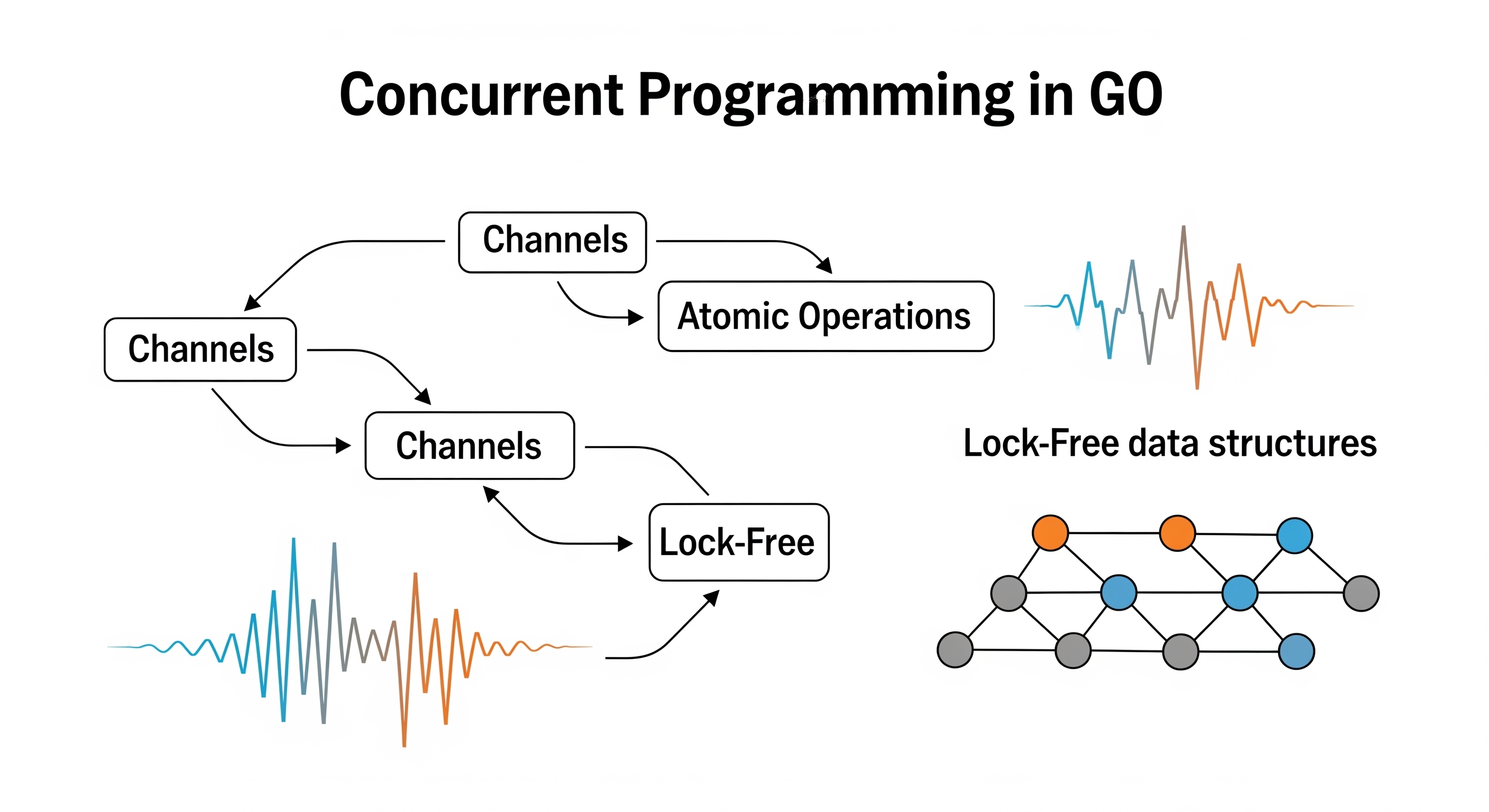How to Write Go Code That Accesses Shared Resources Without Using Exclusive Locks 🤔

In Go, using a Mutex (Mutual Exclusion) is one way to manage access to shared data across multiple goroutines to prevent race conditions, which can lead to data corruption. However, sometimes using a Mutex can cause performance issues and program complexity, and it can hurt performance. So let’s try to write code that avoids unnecessary Mutex locks and see how it’s done.
Reasons to Avoid Exclusive Locks
- Deadlock: Occurs when two or more goroutines are waiting for each other to release a misplaced mutex, causing the program to lock up and stop working.
- Livelock: Occurs when two or more goroutines repeatedly release and lock a mutex, preventing any goroutine from making progress.
- Overhead: Locking and unlocking a mutex has a cost in terms of context switching and managing the state of the mutex, which can affect program performance, especially in cases of high contention.
- Complexity: Managing mutexes in complex programs can make the code harder to read and understand.
- Additional: Dmitry Vyukov — Go scheduler: Implementing language with lightweight concurrency
Ways to Avoid Exclusive Locks (as far as I know)
1. Use Channels Instead of Mutexes
Channels are the primary tool for communication between goroutines in Go and can be used instead of mutexes to safely manage data access.
package main
import (
"fmt"
"sync"
"time"
)
func main() {
const (
items = int[]{1, 2, 3, 4, 5, 6, 7}
producerSleep = 100 * time.Millisecond
consumerSleep = 150 * time.Millisecond
channelBuffer = 2 // The size of the channel buffer for the producer and consumer
)
dataChannel := make(chan int, channelBuffer)
var wg sync.WaitGroup
wg.Add(2) // Create a wait queue for 2 goroutines
go producer(dataChannel, items, producerSleep, &wg)
go consumer(dataChannel, consumerSleep, &wg)
wg.Wait() // Wait until both goroutines are done
}
func veryLongTask(input int, sleepDuration time.Duration) (output int, err error) {
output = input * 2
time.Sleep(sleepDuration)
return
}
func producer(ch chan<- int, items []int, sleepDuration time.Duration, wg *sync.WaitGroup) {
defer wg.Done()
for _, item := range items {
// Send to work
output, _ := veryLongTask(item, sleepDuration)
ch <- output // Send data to the channel after the work is done
fmt.Println("Produced:", item)
}
close(ch) // Close the channel after all data has been sent
}
func consumer(ch <-chan int, sleepDuration time.Duration, wg *sync.WaitGroup) {
defer wg.Done()
for data := range ch {
// Receive data from the channel
fmt.Println("Consumed:", data)
time.Sleep(sleepDuration)
}
}
2. Use Lock-Free Data Structures
Using data structures designed to avoid mutexes, such as sync.Map, allows for safe data access without having to manage mutexes yourself.
package main
import (
"fmt"
"sync"
)
func main() {
var m sync.Map
// Store data
m.Store("key1", "value1")
m.Store("key2", "value2")
// Read data
m.Range(func(key, value interface{}) bool {
fmt.Println(key, value)
return true
})
}
3. Use Atomic Operations
Go has the sync/atomic package, which provides functions for atomic operations (similar to the Atomicity property in databases), allowing for safe incrementing or decrementing of variables from concurrent access by multiple goroutines.
package main
import (
"fmt"
"sync"
"sync/atomic"
)
func main() {
var counter int64
var wg sync.WaitGroup
for i := 0; i < 1000; i++ {
wg.Add(1)
go func() {
defer wg.Done()
atomic.AddInt64(&counter, 1) // Increment the counter variable
}()
}
wg.Wait() // Wait for all goroutines to finish
fmt.Println("Final Counter:", counter)
}
4. Use a Read/Write Mutex
If you want to allow multiple goroutines to read data but only one goroutine to write data, and you need to use a mutex, you can use sync.RWMutex, which allows for concurrent reads without waiting for writes.
package main
import (
"fmt"
"sync"
"time"
)
type SafeData struct {
mu sync.RWMutex
data int
}
func (s *SafeData) Read() int {
s.mu.RLock() // Use RLock for reading
defer s.mu.RUnlock()
return s.data
}
func (s *SafeData) Write(value int) {
s.mu.Lock() // Use Lock for writing
defer s.mu.Unlock()
s.data = value
}
func main() {
safeData := SafeData{}
var wg sync.WaitGroup
// Goroutine for writing data
wg.Add(1)
go func() {
defer wg.Done()
for i := 0; i < 5; i++ {
safeData.Write(i)
fmt.Println("Written:", i)
time.Sleep(100 * time.Millisecond)
}
}()
// Goroutines for reading data
for i := 0; i < 5; i++ {
wg.Add(1)
go func() {
defer wg.Done()
fmt.Println("Read:", safeData.Read())
time.Sleep(50 * time.Millisecond)
}()
}
wg.Wait() // Wait for all goroutines to finish
}
Conclusion
Avoiding the use of Mutex locks in Go can be done in several ways, such as using channels, lock-free data structures, atomic operations, and read/write mutexes. Choosing the right method will help improve performance and reduce the complexity of your program, making it run smoothly and safely from concurrent data access (race conditions).
Additional: How To Avoid Locks (Mutex) In Your Golang Programs?